Wine tourism in Burgundy
Wine Tourism in Burgundy: destination information, how to move in Burgundy, Top Wine Experiences, Itineraries and tours, tips and secrets.
Burgundy, a prestigious wine region in France, is celebrated for its exceptional Pinot Noir and Chardonnay wines. Known for its unique terroir and centuries-old winemaking traditions, Burgundy is a tapestry of small villages, historic vineyards, and renowned appellations like Côte de Nuits and Côte de Beaune. Its rolling vineyards, with characteristic limestone soils, are dotted with ancient monasteries and picturesque châteaux, embodying the region's rich heritage.
In this guide, explore Burgundy’s storied history, diverse wine styles, and the unparalleled beauty that makes it a top destination for wine enthusiasts worldwide. If you're already familiar with the Burgundy wine region and its renowned wines, feel free to skip this guide and directly start searching for Burgundian wine experiences available on winedering.com.
The Destination: Burgundy
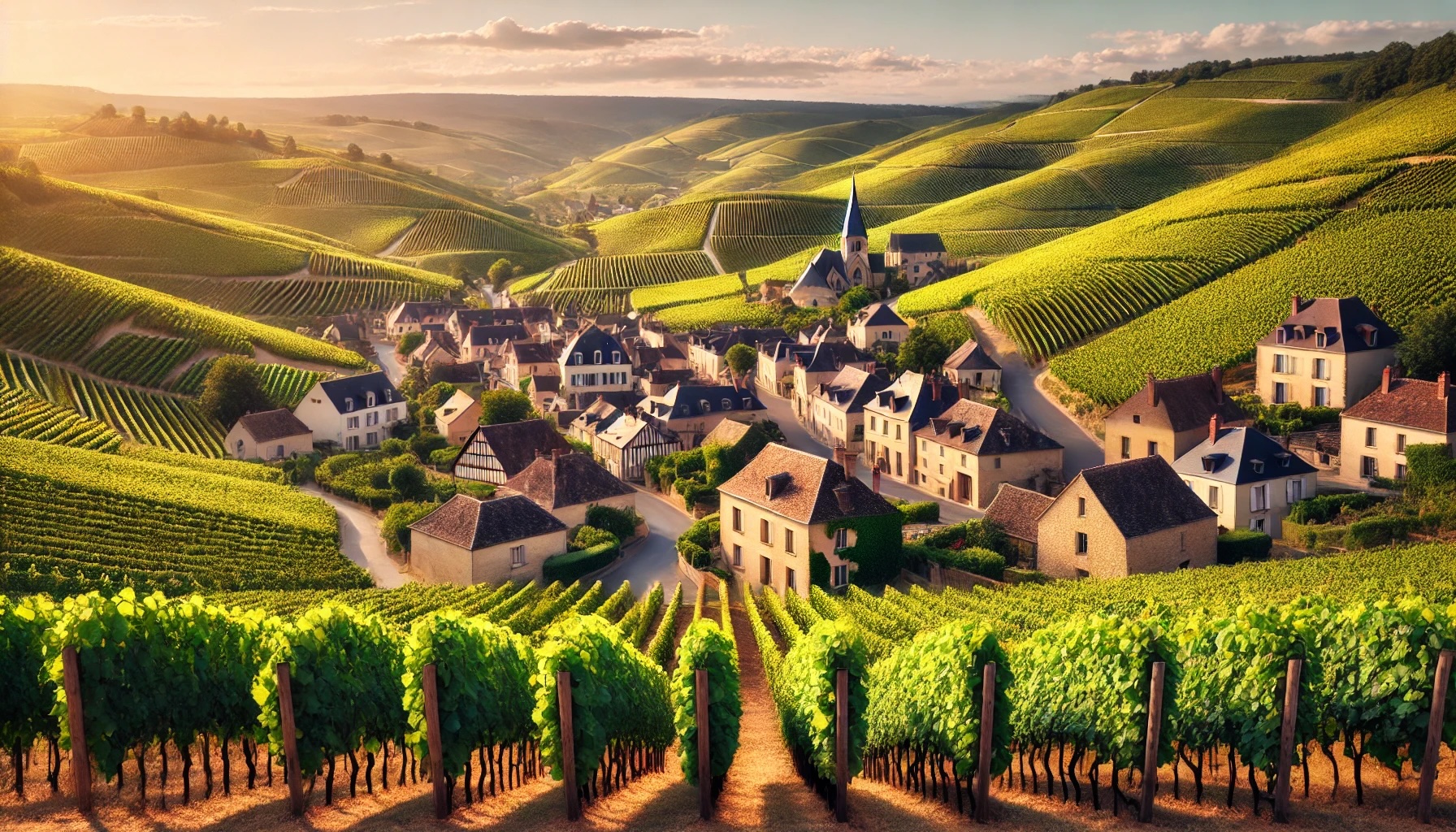
Welcome to Burgundy, a region where winemaking heritage, scenic landscapes, and cultural richness come together seamlessly.
Located in eastern France, Burgundy has a winemaking history spanning over a thousand years. The region’s unique terroir — characterized by limestone-rich soils formed millions of years ago when the area was submerged by a sea — contributes to the distinctive minerality and complexity of its wines. Burgundy’s wine tradition was shaped by the Benedictine and Cistercian monks, who meticulously cultivated vineyards and established the concept of terroir. In 1336, the Cistercians created the first enclosed vineyard, Clos Vougeot, which is still producing wine today.
The region’s geography is marked by gently rolling hills, diverse microclimates, and soils that create ideal conditions for growing world-class Pinot Noir and Chardonnay. Burgundy’s vineyards are divided into several sub-regions, including the Côte de Nuits, Côte de Beaune, and Chablis, each offering its own unique expression of these grape varieties.
Beyond its vineyards, Burgundy boasts a wealth of historical and cultural attractions. Visitors can explore UNESCO-listed sites like the Climats, Terroirs of Burgundy, and charming towns such as Dijon and Beaune, known for their medieval architecture, art, and vibrant culinary scene. Picturesque villages like Châteauneuf and Flavigny-sur-Ozerain offer a glimpse into the region’s medieval past, while outdoor enthusiasts can enjoy the natural beauty of the Morvan Regional Park, perfect for hiking, biking, or boating along its extensive canal network.
Burgundy’s iconic wine route, the Route des Grands Crus, invites visitors to experience tastings at local wineries and delve into the rich winemaking heritage. Throughout the year, the region hosts wine festivals and events that celebrate its centuries-old traditions and gastronomy.
Burgundy is more than just a wine destination — it's a journey through history, a celebration of tradition, and a breathtaking experience of beauty and culture.
How To Reach Burgundy
Route 1: Paris to Burgundy’s Heart (Dijon and Beaune)
Highlights: Dijon, Côte de Nuits, Côte de Beaune, and Beaune
Take a high-speed TGV train from Paris to Dijon in just 1.5 hours, where you can begin your exploration of Burgundy’s wine heritage. Start by visiting Dijon’s historic city center, local markets, and the Palace of the Dukes. Then head south along the Route des Grands Crus through the famous wine villages of Gevrey-Chambertin, Nuits-Saint-Georges, and Vosne-Romanée. Continue to Beaune, the capital of Burgundy’s wine region, to explore the iconic Hospices de Beaune and enjoy tastings in its many wine cellars.
Route 2: Lyon to Southern Burgundy (Mâconnais and Côte Chalonnaise)
Highlights: Mâcon, Pouilly-Fuissé, Rully, Mercurey, and Givry
Route 3: Champagne to Burgundy (Chablis and Auxerre)
Highlights: Chablis, Auxerre, and Vézelay
From the Champagne region, drive to Chablis, one of Burgundy’s northernmost wine areas. Known for its crisp and elegant Chardonnay, Chablis is the perfect destination to start your Burgundy adventure. Continue to Auxerre, a picturesque town with Gothic architecture and riverside charm, and then on to Vézelay, a UNESCO World Heritage site famous for its basilica and breathtaking views of the Burgundy countryside.
Burgundy is well-connected and easily accessible from major cities in France and Europe, making it a convenient destination for wine lovers and travelers alike. Here are the best ways to reach this picturesque wine region:
Flights
The nearest major airports are:
- Lyon-Saint Exupéry Airport (LYS): About 1.5 hours from Burgundy by car or train.
- Paris Charles de Gaulle Airport (CDG): Approximately 2 hours by train to Dijon, the gateway city to Burgundy.
From these airports, you can rent a car, take a train, or catch a connecting flight to smaller regional airports like Dijon-Bourgogne (DIJ).
Trains
The TGV (high-speed train) network offers direct connections to Burgundy’s main cities:
- Paris to Dijon: About 1.5 hours.
- Lyon to Beaune: Around 1 hour.
Train travel is a comfortable and scenic way to reach Burgundy, with regular services departing from Paris and Lyon.
Car / Ncc
Driving through Burgundy allows you to explore its beautiful countryside and vineyards at your own pace. The region is easily accessible by the A6 motorway from Paris or Lyon. Rental cars are available at major airports and train stations.
Buses
Several bus companies operate routes to Burgundy from Paris, Lyon, and other French cities, making it a cost-effective option.
How to visit wineries in Burgundy
Exploring Burgundy’s wineries can be a delightful and immersive experience, and choosing the right mode of transportation can enhance your visit.
Renting a car is the most convenient way to explore Burgundy, offering flexibility to visit both famous estates and hidden gems. You can rent a car in major cities like Dijon, Beaune, or Chalon-sur-Saône, and easily navigate the Route des Grands Crus. This option allows you to travel at your own pace, stopping at wineries, picturesque villages, and local restaurants along the way.
Biking through Burgundy is a scenic and enjoyable way to visit wineries, especially along the Voie des Vignes (Vineyard Trail) from Dijon to Santenay. The region is bike-friendly, with dedicated routes that pass through vineyards and picturesque villages. This option is ideal for combining wine tastings with an active outdoor experience.
Trains offer a way to travel between major cities in Burgundy, such as Dijon, Beaune, and Chalon-sur-Saône. Although they don’t connect directly to wineries, you can use trains to reach a base city and then explore nearby vineyards by taxi, bike, or on a guided tour.
Guided wine tours or hiring a private driver are ideal options for a worry-free experience. Many tours include pick-up and drop-off from your accommodation, along with a curated itinerary of winery visits. Local guides provide deeper insights into the region’s history and wines, making for a more enriching experience. Additionally, a private driver allows you to customize your itinerary and visit both large estates and smaller family-run wineries.
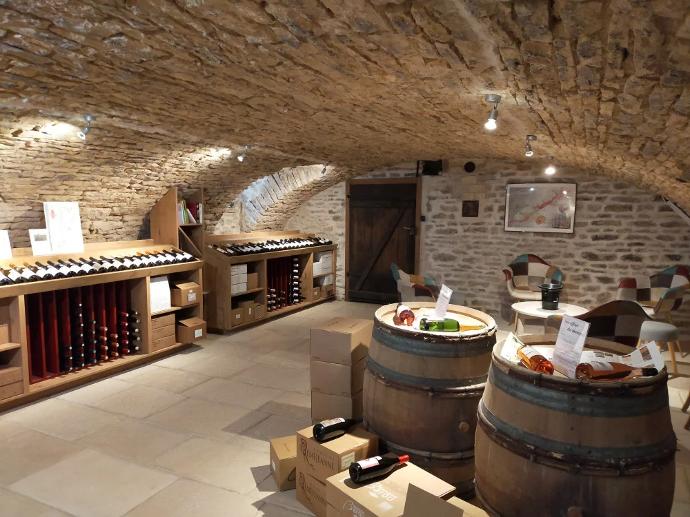
Gourmet Break: Wine Tasting Experience at Caveau à Auxey
Le Caveau à Auxey, located near Beaune in the heart of the prestigious wine village of Auxey-Duresses, offers a welcoming atmosphere to explore Burgundy’s flavors and history. Enjoy a guided tasting of five Burgundian wines paired with a charcuterie and cheese board. The experience highlights family estate wines, celebrating the human connection behind winemaking. A special board and juice are available for children.
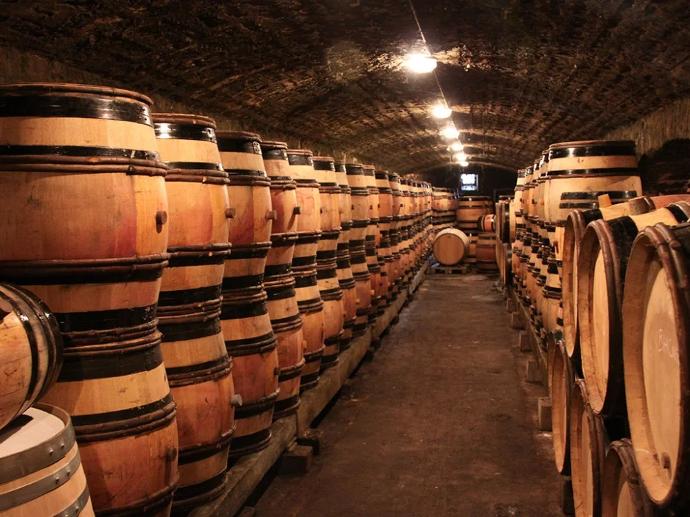
Burgundy Full-day Private Wine Tour from Beaune or Dijon
Enjoy a full-day wine tour starting from Beaune or Dijon, exploring prestigious vineyards along the Grands Crus route. The experience includes visits to two family-run wineries, a tasting lunch at Olivier Leflaive (optional), and a tasting at a local caveau in Côte de Beaune. Learn about Burgundy’s unique terroir, enjoy guided tastings, and delve into the history and passion behind each wine. Transportation and an English-speaking guide are provided for a seamless journey through the heart of Burgundy’s wine country.
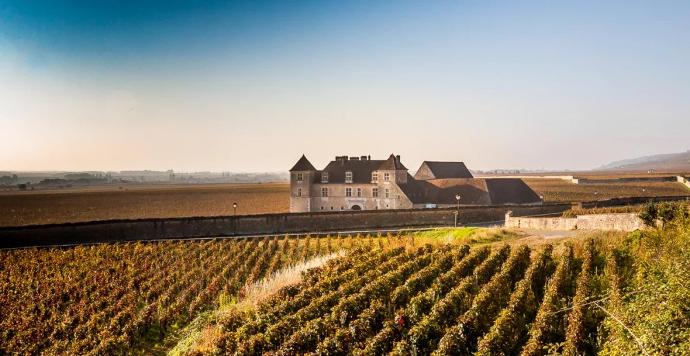
The Grand Crus Discovery: Full day Wine tour in Côte de Nuits from Beaune
This full-day wine tour begins with visits to renowned Côte de Nuits vineyards, including Romanée-Conti and Château du Clos de Vougeot. Explore the region's winemaking history with guided tours and map discussions. Enjoy a traditional French lunch, then visit Domaine Moillard in Nuits-Saint-Georges for a cellar tour and tasting. Conclude with a visit to Domaine Debray in Beaune, where you'll sample wines from both Côte de Beaune and Côte de Nuits.
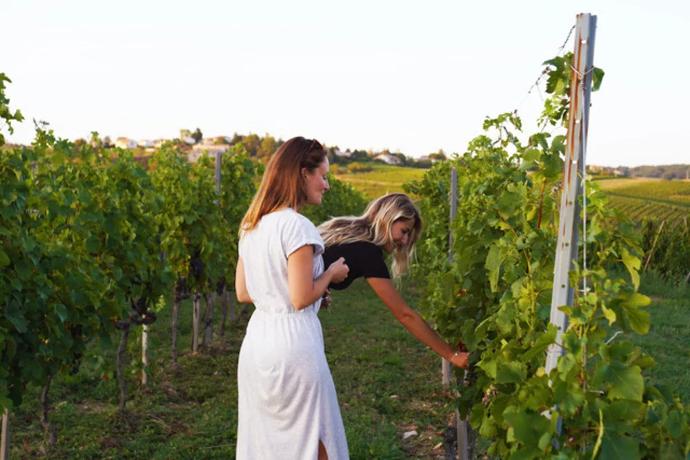
Full-day Southern Burgundy Wine tour from Lyon or Mâcon
The Southern Burgundy Wine Tour includes visits to three wineries, featuring tastings of Pouilly-Fuissé, Saint-Véran, and other Mâconnais appellations. You’ll explore the vineyards at the foot of the Solutré rock, take a guided tour of the cellars, and learn about the diverse terroirs. Lunch is not included in the price but is arranged at a local restaurant. Enjoy private transportation, guided tours, and pick-up/drop-off from your hotel in Lyon or in Mâcon.
Wine & Food in Burgundy
Land of Pinot and Chardonnay
Burgundy, located in eastern France, is one of the world’s most celebrated wine regions. The region's terroir is defined by its unique limestone-rich soils and varied topography, contributing to wines with exceptional minerality, complexity, and elegance. The concept of climat — specific vineyard plots with unique geological and climatic features — underpins Burgundy’s identity. Each climat produces a distinct wine that showcases the nuanced expression of its location, making Burgundy a treasure trove for wine enthusiasts who seek diversity and authenticity in every bottle.
The primary grape varieties in Burgundy are Pinot Noir and Chardonnay. Pinot Noir, grown mainly in the Côte de Nuits, yields red wines that are elegant, aromatic, and structured, often with red fruit, floral, and earthy notes. Chardonnay, cultivated primarily in Chablis and the Côte de Beaune, produces white wines ranging from crisp and mineral-driven to rich and opulent, depending on the terroir. These wines are renowned for their ability to age gracefully, developing layers of complexity over time.
The region’s appellation system is one of the most complex in the world, with 84 appellations divided into 4 quality levels: Grand Cru, Premier Cru, Village, and Regional. The Grand Cru and Premier Cru vineyards, representing the pinnacle of Burgundy’s quality, are often small, meticulously tended plots that yield highly sought-after wines. Famous Grand Cru vineyards such as Romanée-Conti, Montrachet, and Clos de Vougeot are revered worldwide, with bottles commanding high prices due to their rarity and exceptional quality. Burgundy’s villages, such as Gevrey-Chambertin, Vosne-Romanée, Meursault, and Puligny-Montrachet, are synonymous with some of the world’s finest wines. Each village has its own identity and produces wines with distinct flavor profiles, reflecting the subtle variations in soil, slope, and microclimate.
In essence, Burgundy’s allure lies in its unparalleled expression of terroir, centuries-old winemaking traditions, and a deep commitment to quality, making it a symbol of elegance, refinement, and excellence in the wine world.
The Wine-Producing Areas of Burgundy
Covering roughly 28,000 hectares between Auxerre and the Mâcon region, Burgundy includes 84 wine appellations across the following 6 distinctive wine-producing areas, each showcasing unique characteristics and terroir:
-
Côte de Nuits & Hautes Côtes de Nuits
These wine appellations are renowned for their prestigious Pinot Noir, along with some select whites from Chardonnay and Aligoté. The region stretches for 20km and includes world-famous appellations like Chambertin and Romanée-Conti. Known as the "Champs-Elysées of Bourgogne," the area is characterized by its unique terroir and exceptional quality. The Hautes Côtes de Nuits vineyards, located at higher altitudes, have undergone a revival since the 1950s, producing powerful wines full of character.
-
Côte de Beaune & Hautes Côtes de Beaune
These areas are renowned for their prestigious red and white wines. Stretching over 20km from Ladoix-Serrigny to Maranges, this region produces appellations such as Volnay, Meursault Premier Cru, and Montrachet. The area’s terroir and unique microclimates contribute to its exceptional Pinot Noir and Chardonnay. Hautes Côtes de Beaune, situated on a plateau at higher altitudes, produce lively and accessible wines that are equally notable.
-
Côte Chalonnaise & Couchois
The Côte Chalonnaise and Couchois regions, located south of the Côte de Beaune, produce a variety of wines including reds and delicate whites made from Pinot Noir, Chardonnay, and Aligoté. The area spans 25 km and features renowned appellations like Rully, Mercurey, and Givry. Known as the birthplace of Crémant de Bourgogne, this region’s vineyards benefit from favorable southeast-facing slopes and unique microclimates. -
Macônnais
Mâconnais, the southernmost region of Burgundy, is known for its rolling landscapes and monumental cliffs, primarily producing Chardonnay wines that are rich in aroma and flavor. The area also grows some Gamay for red wines. Key appellations include Pouilly-Fuissé, Saint-Véran, and Viré-Clessé. The region’s unique terroir is shaped by its valleys and hills, and its historical ties to the Cluny monks, who played a significant role in its wine heritage. -
Chablis & Grand Auxerrois
The Chablis and Grand Auxerrois regions produce dry white wines with a distinct mineral profile, primarily using Chardonnay grapes. Chablis, known for its green-gold wines, includes Grand Cru and Premier Cru appellations. The Grand Auxerrois encompasses various terroirs such as Auxerrois, Tonnerrois, Vézelien, and Jovinien, with wines made from traditional Burgundy varietals like Pinot Noir, Gamay, and Aligoté. Notable appellations include Saint-Bris, Irancy, and Vézelay. -
Châtillonnais
The Châtillonnais region, located northwest of Dijon, is primarily dedicated to the production of Crémant de Bourgogne. Known as the "Kingdom of Crémant," this area has a rich winemaking history that dates back over 2,000 years. The vineyards are planted on south-southeast facing slopes with limestone soils, which contribute to the refined character of its wines. The region also produces fresh and convivial Bourgogne reds and mineral-driven whites.
Gastronomy of Burgundy
Burgundy, renowned for its world-class wines, is equally celebrated for its rich culinary heritage. The region’s cuisine is deeply tied to its terroir, featuring hearty dishes that perfectly complement its iconic Pinot Noir and Chardonnay wines. From cozy village bistros to Michelin-starred establishments, Burgundy offers a diverse dining scene where traditional flavors meet refined gastronomy, making it a haven for food and wine lovers alike.
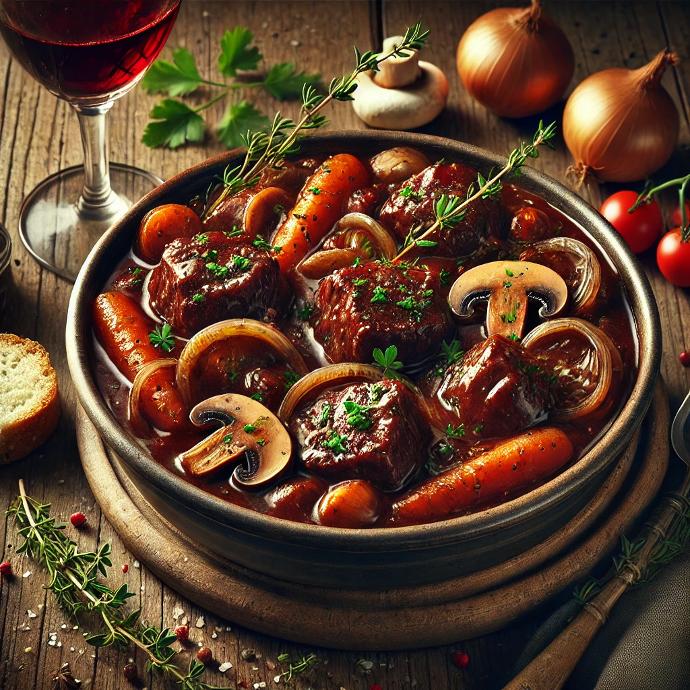
Boeuf Bourguignon
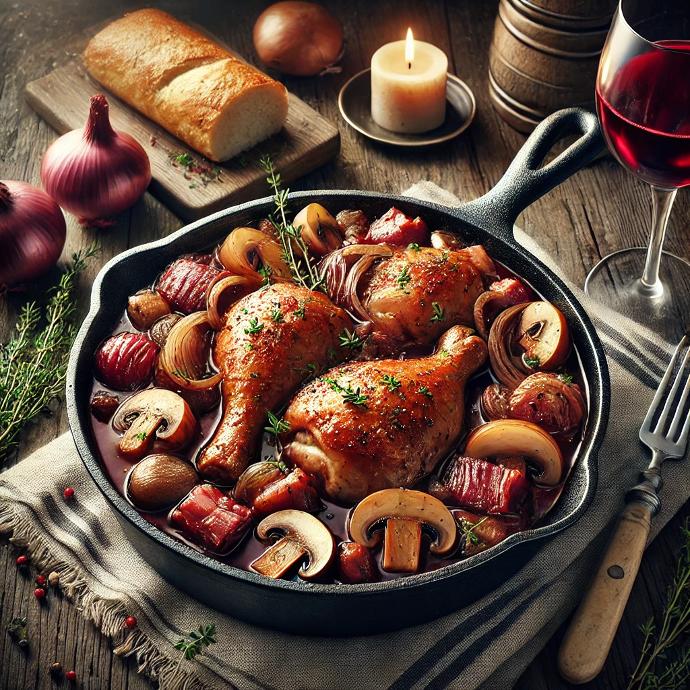
Coq au Vin
Coq au Vin is a traditional chicken dish braised in red wine with lardons, mushrooms, onions, and garlic, resulting in a succulent, flavorful meal. Typically served with potatoes or crusty bread, this dish pairs perfectly with a Bourgogne Rouge or a Beaune Premier Cru Pinot Noir. The wine’s red fruit flavors and subtle earthiness elevate the dish, while its bright acidity balances the richness of the sauce.
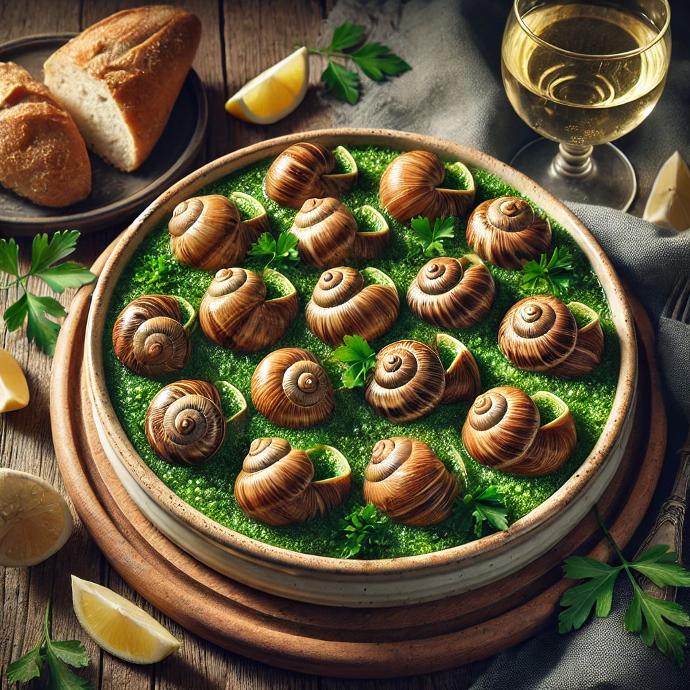
Escargots de Bourgogne
Burgundy snails are cooked in a sauce of garlic, parsley, and butter, served in their shells. The herbaceous, buttery flavors of this iconic dish are best paired with a crisp, mineral-driven white wine like a Chablis. The wine’s high acidity and citrus notes cut through the richness of the butter and complement the dish’s herbal components, making it a refreshing match.
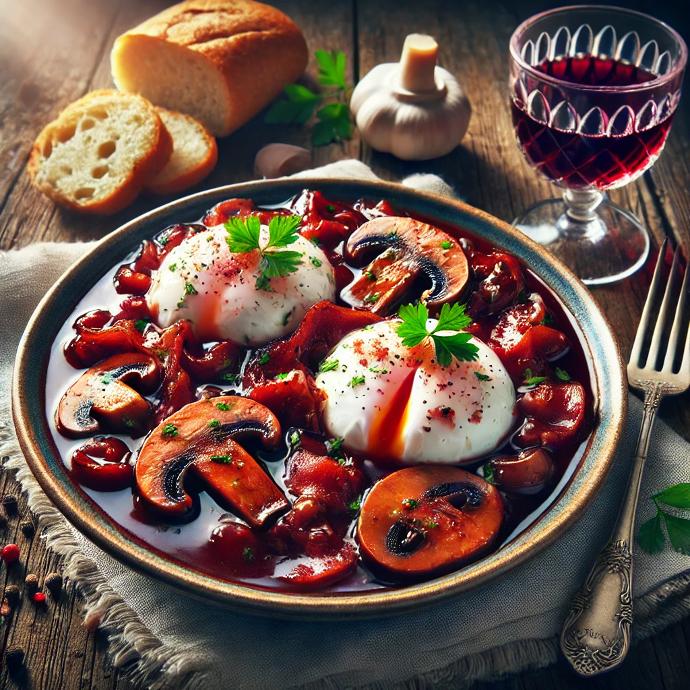
Oeufs en Meurette
This classic Burgundy dish features poached eggs served in a rich red wine sauce made with bacon, mushrooms, onions, and a touch of garlic. The sauce, known as meurette, is typically made using Burgundy red wine, giving it a deep color and robust flavor. This dish is often served over toasted bread. Oeufs en Meurette pairs excellently with a young Bourgogne Rouge or Côte de Beaune Pinot Noir.
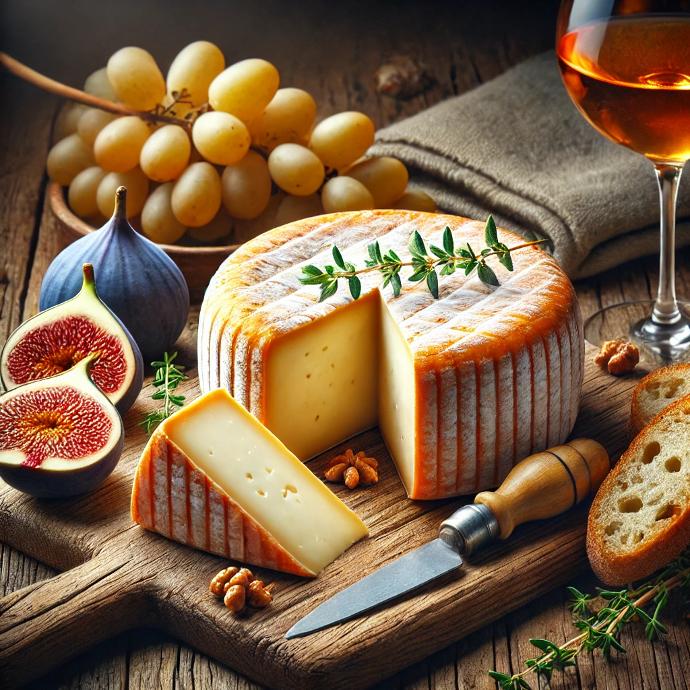
Epoisses de Bourgogne
This soft, pungent cheese with a strong aroma and creamy texture is considered the “King of Burgundy cheeses.” The cheese is washed in Marc de Bourgogne (a local pomace brandy) during its ripening process, giving it a distinctive, slightly salty flavor and a creamy, almost spoonable interior. Pair époisses with Chablis or Meursault, its minerality and vibrant acidity offers a contrasting yet harmonious match, enhancing the cheese’s creamy texture.
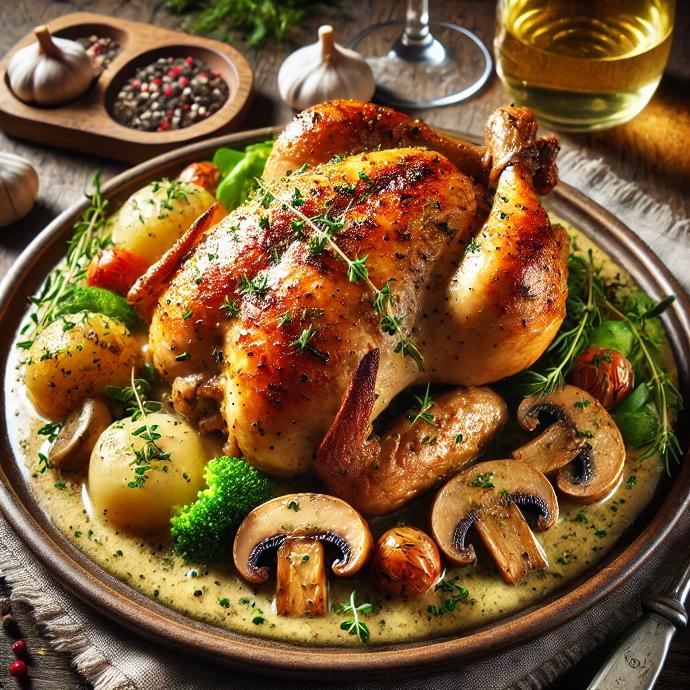
Poulet de Bresse
This famous chicken dish uses the prized Bresse chicken, a breed known for its delicate texture and flavor. The dish is typically roasted or prepared in a creamy sauce with mushrooms and white wine, showcasing the tenderness of the chicken. It is often accompanied by potatoes, vegetables, or rice. A Meursault or Puligny-Montrachet Chardonnay is a classic pairing for Poulet de Bresse.
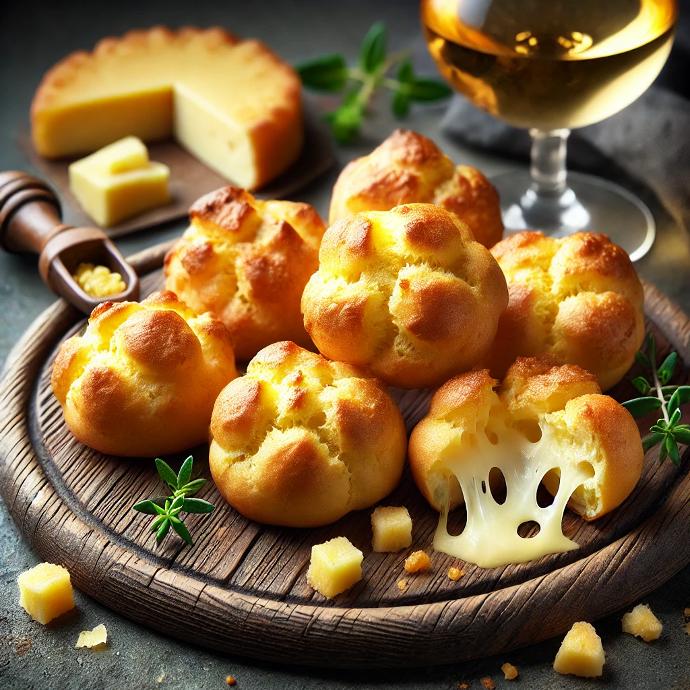
Gougères
These savory cheese puffs, made with Gruyère or Comté, are a popular aperitif in Burgundy. Pair them with a Crémant de Bourgogne, the region’s sparkling wine, or a Mâcon-Villages Chardonnay. The sparkling wine’s effervescence cleanses the palate, while the Chardonnay’s creamy texture and minerality harmonize with the cheese, enhancing the delicate flavors of the gougères.
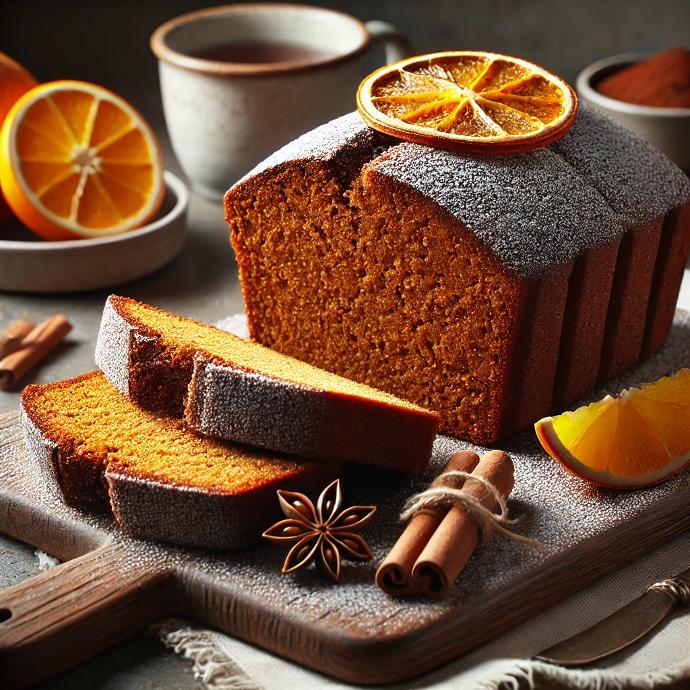
Pain d’Épices
Pain d'Épices, or spiced gingerbread, is a honey-based cake with spices like cinnamon, cloves, and anise. This sweet treat pairs well with a glass of Bourgogne Blanc or Gewurztraminer. The slight sweetness and floral notes of these wines enhance the spice elements in the gingerbread, making for a harmonious pairing that complements both the sweetness and complexity of the dessert.

Gâteau de Riz
Gâteau de Riz is a traditional rice pudding cake with a caramelized top and subtle vanilla and lemon zest flavors. Pair this dessert with a Crémant de Bourgogne Rosé or a Montagny Premier Cru Chardonnay. The sparkling wine’s fruitiness and bubbles provide a delightful contrast to the creamy texture of the cake, while the Chardonnay’s subtle oak and citrus notes elevate the dessert’s flavor profile.
Other gastronomic specialties of Burgundy include products like Burgundy truffles, Dijon mustard, and Crème de Cassis which showcase the region’s artisanal prowess.
Burgundy truffles, found in the forests and meadows of the region, are celebrated for their delicate aroma and nutty, earthy flavor. These precious fungi are typically used to elevate simple dishes or paired with Burgundy’s wines, making them a prized addition to any culinary creation. For a true immersion in the world of truffles, visitors can embark on a truffle hunting adventure and enjoy an all-truffle tasting menu paired with a glass of local wine at La Maison aux Mille Truffes, just a 20-minute drive from Beaune. Check out their experience here.
Dijon mustard is one of Burgundy's most famous exports. Known for its sharp and tangy flavor, it is made using brown or black mustard seeds mixed with white wine or wine vinegar. It can be found in many variations, including with added herbs or spices, making it a versatile condiment in both traditional and contemporary cuisine. The town of Dijon itself is the epicenter of mustard production, where visitors can explore shops and boutiques dedicated to this iconic product.
Crème de Cassis, a sweet, dark red liqueur made from blackcurrants, is a key ingredient in the classic aperitif Kir or Kir Royal when mixed with white wine or Champagne. The liqueur's intense fruitiness makes it popular both as a drink and in desserts or sauces, adding depth and richness to various dishes. The town of Nuits-Saint-Georges, in particular, is known for producing some of the finest Crème de Cassis in the region.
Top 4 Wine Experiences
Here are our top 4 recommendations for wine experiences in Burgundy, carefully selected by Winedering, the world's most popular wine and food experiences marketplace. These experiences, booked by thousands of customers, are the ones we highly recommend for creating unforgettable moments.
Mercurey Wine Immersion Experience at Collection Tramier
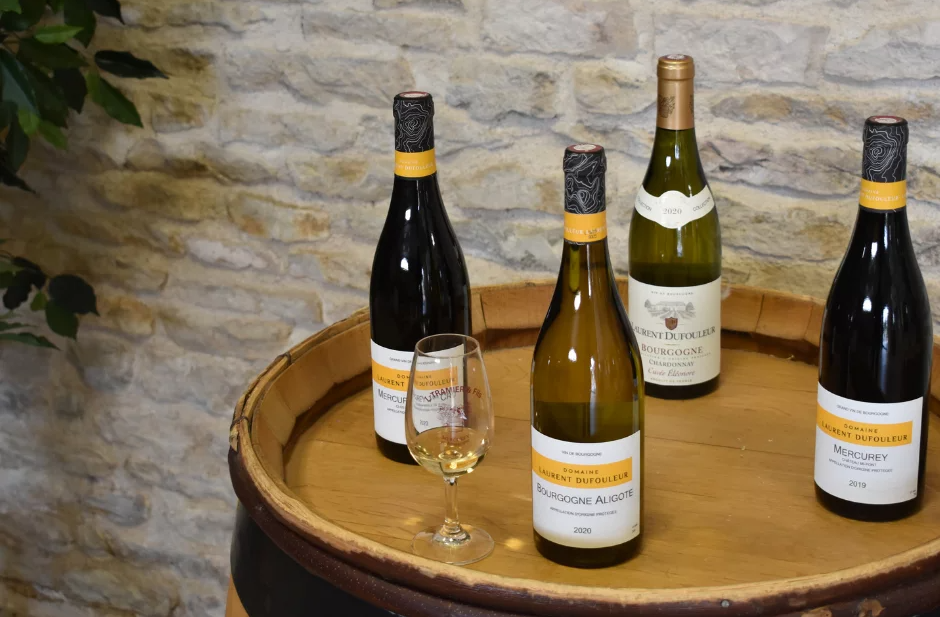
Experience a guided tasting of four emblematic Burgundy wines at Collection Tramier, including Mercurey 1er Cru and Bouzeron, led by the Cellar Manager. This visit includes a tour of the historic cellars (dating back to 1842) and the Mi-Pont vineyard, offering insights into the estate’s winemaking process and terroir. Gain expert knowledge and enjoy an unforgettable sensory journey through the rich flavors of Burgundy.
Experience type: Winery visit & tasting
Ideal for: Solo travelers, couples, and groups (max. 12 people)
Complete Visit and Wine Tasting with local products at Domaine Debreuille
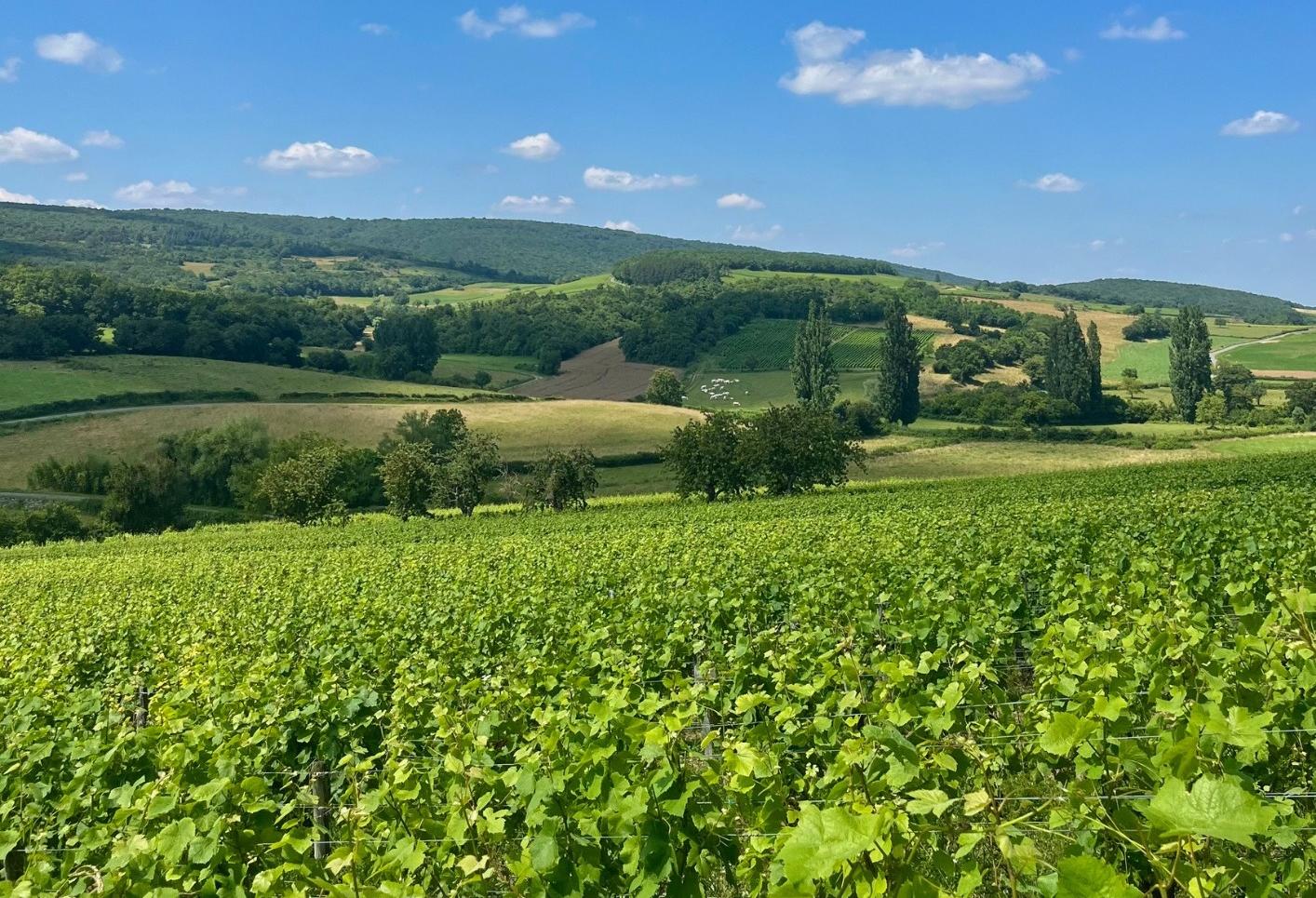
Experience type: Winery visit and tasting
Ideal for: Friends, groups (4-25 people)
Visit & Chablis Wine Tasting Experience at Domaine Clotilde Davenne
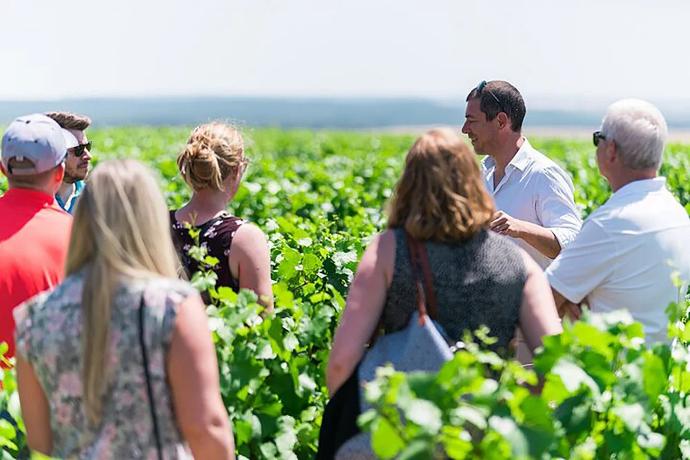
Discover the essence of Chablis at Domaine Clotilde Davenne with a guided tour of the vineyards and cellar, followed by a tasting of 6 wines from their Chablis and Auxerrois collections. The experience, lasting 1 to 1.5 hours, offers a memorable journey into winemaking set against the beautiful Chablis landscape. Ideal for wine enthusiasts looking to explore the region’s terroir and history.
Experience type: Winery visit & tasting
Ideal for: Solo travelers, friends, and groups (max 12 people)
Wine Tasting at Domaine du Beauregard in the Heart of Côtes du Couchois
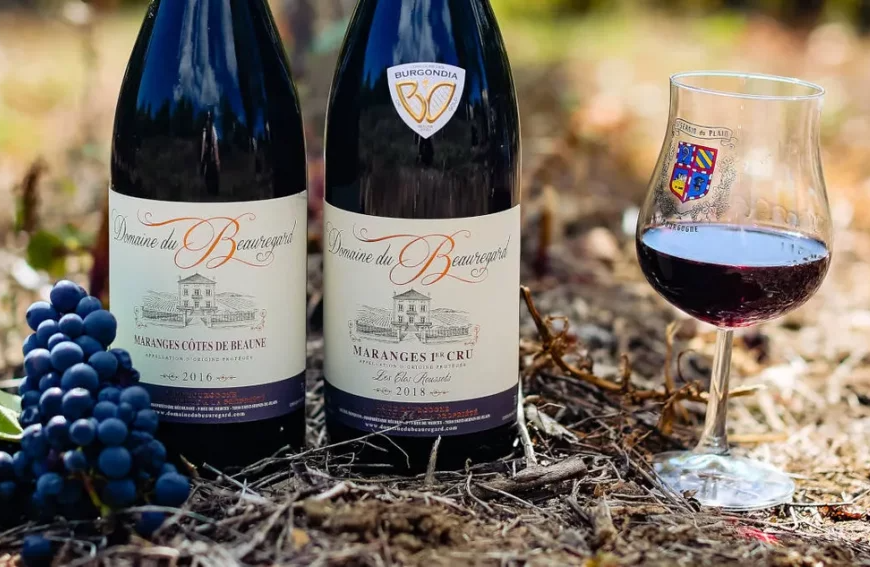
Discover Domaine du Beauregard in the heart of Côtes du Couchois with a guided tasting of 4 wines — 2 whites and 2 reds. Explore the estate’s winemaking heritage while learning about each wine’s unique characteristics, history, and ideal food pairings. A perfect experience for those looking to immerse themselves in Burgundy’s rich wine traditions.
Experience type: Guided wine tasting
Ideal for: Couples, groups of up to 15 people
Itineraries and Wine Tours
in
Burgundy
If you need some inspiration for your next trip or looking to adjust your current reservations in Burgundy, check out our itinerary recommended by Winedering for the world-famous Burgundy wine appellation. The Winedering team has meticulously curated this tour to offer you an exceptional experience.
Tour #1: Full-Day Burgundy Wine Tour from Beaune
Embark on a captivating full-day tour through 3 wineries in Burgundy, where you’ll delve into the region’s wine culture and craftsmanship. Throughout the day, explore historic cellars and picturesque vineyards, and savor a tasting of approximately 20 diverse wines. This enriching experience provides an in-depth understanding of Burgundy’s winemaking traditions and exceptional varietals.
/
10 am
Depart from
Beaune
by car or personal driver.
/
13 pm
Duration: 3 hours
At 13 pm, transfer to Collection Tramier. The drive takes approximately 45 minutes.
/
3.30 pm
Duration
: 1,5 hours
At 3.30 pm, transfer to Domaine du Beauregard. The drive takes approximately 20 minutes.
/
5 pm
/
5.30 pm
Return to Beaune.
Total duration: around 10 h 30 min.
Enjoy Wine Experiences in Burgundy
With detailed itineraries and insider tips, your adventure through the Burgundy wine region will be both seamless and enriching.
Remember to take your time, enjoy the stunning views, and soak in the warm hospitality of the local winemakers and residents. Here's to many memorable wine experiences in Burgundy, that you can easily book online on Winedering.com, the best online wine tourism marketplace worldwide.
Bon voyage and cheers to an unforgettable Burgundy adventure!